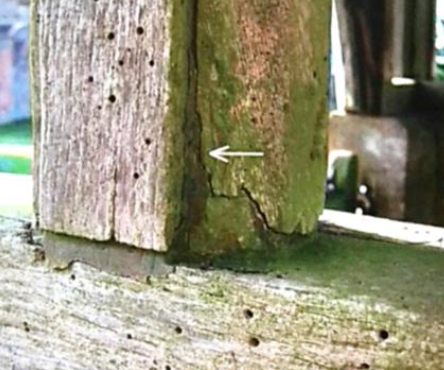Um estudo sobre o restauro de estruturas de madeira e o caso do antigo alto-forno de Gunns Mill, Reino Unido
DOI:
https://doi.org/10.14568/cp29466Palavras-chave:
Forest of Dean, Restauro de estruturas de madeira, Alto-forno, Gunns Mill, Edifícios em riscoResumo
Este artigo fornece um resumo crítico das técnicas de restauro empregues para estruturas de madeira e uma análise dos fatores que podem definir a adoção de uma determinada abordagem, neste caso, uma análise sobre Gunns Mill. Gunns Mill é um alto-forno remanescente do século XVII, localizado na Forest of Dean, que foi a principal área de produção de ferro no Reino Unido desde a Idade Média. A casa de secagem de papel meio-enxaimel do século XVIII sobreviveu, no entanto, encontra-se num estado degradado. O conhecimento na primeira parte é aplicado a um aspecto da casa de papel e são discutidas as abordagens para o seu restauro. O restauro não depende apenas das considerações estruturais, do valor histórico e do aspeto visual, mas também da filosofia de conservação adotada, que pode restringir as opções.
Downloads
Referências
The Society for the Protection of Ancient Buildings, SPAB, ‘Knowledge Base’, in SPAB (2009), https://www.spab.org.uk/advice/knowledge-base (accessed 2023-06-18).
Historic England, Practical building conservation: timber, Ashgate Publishing Ltd, Surrey (2012).
ICOMOS, ‘Principles for the preservation of historic timber structures (1999)’, in ICOMOS.org (1999) https://www.icomos.org/images/DOCUMENTS/Charters/wood_e.pdf (accessed 2023-01-31).
ICOMOS, ‘The Burra Charter: the Australia ICOMOS Charter for places of cultural significance’, in IPHAN, ICOMOS Australia (2013) http://portal.iphan.gov.br/uploads/ckfinder/arquivos/The-Burra-Charter-2013-Adopted-31_10_2013.pdf (accessed 2023-01-31).
Brereton, C., The repair of historic buildings: advice on principles and methods, 2nd ed., English Heritage, London (1995).
Pickard, R. D., Conservation in the built environment, Addison Wesley Longman Ltd, London (1996).
McCaig, I.; Ridout, B., English heritage practical building conservation: timber, Ashgate Publishing Ltd, Surrey (2012).
Forest of Dean Buildings Preservation Trust, ‘Gunns Mill Furnace.’ (2014), in FODPT.org, https://www.fodbpt.org/gunns-mill---home.html (accessed 2023-06-18).
Demidowicz, G & T. ‘Gunns Mill, Abenhall, Gloucestershire’. A history for English Heritage. Unpublished (2001), https://www.fodbpt.org/assets/demidowicz.pdf (accessed 2023-06-18).
Brentnall, C., ‘Timber.’, in Materials & skills for historic building conservation, ed. M. Forsyth, Blackwell Publishing Ltd, West Sussex (2008) 167-77.
Russell, R., ‘Structural timber repairs’, in Building Conservation (2013), http://www.buildingconservation.com/articles/structural-timber-repairs/structural-timber-repairs.htm (accessed 2017-02-15).
Singh, J., ‘Timber decay’, in Building Conservation (1996), http://www.buildingconservation.com/articles/envmon/timber_decay.htm (accessed 2017-02-23).
Ridout, B., ‘Insect damage to timber, rethinking control mechanisms’, in Building Conservation (2005), http://www.buildingconservation.com/articles/insectdamage/insectdamage.htm (accessed 2017-02-23).
Hunt, R.; Suhr, M., ‘Old house handbook: A practical guide to care and repair.’ in Frances Lincoln Publishers, London (2008) 95-111.
‘BS 7913: 2013. Guide to the conservation of historic buildings’, in Heritage-house.org (2013), https://www.heritage-house.org/documents/BS-7913.pdf (accessed 2023-01-31).
Bravery, A. F.; Berry, R. W.; Carey, J. K.; Cooper, D. E., Recognising wood rot and insect damage in buildings, BRE Bookshop, London (2003).
Hutton, T., ‘Woodworm, Anobium Punctatum’, in Building Conservation (2008) http://www.buildingconservation.com/articles/woodworm/woodworm.htm (accessed 2017-02-20).
Orbasli, A., Architectural conservation: principles and practice, Wiley-Blackwell, Oxford (2007).
Boutwood, J., The repair of timber frame and roofs - Technical Pamphlet 12. SPAB Society for the Protection of Ancient Buildings, London (1991).
Wilson, P., ‘Timber for repairs’, in Building Conservation (2014), http://www.buildingconservation.com/articles/repair-timber/repair-timber.htm (accessed 2017-02-23).
Yeomans, D., The repair of historic timber structures, Thomas Telford, London (2003).
Caroe & Partners Architects, GUNNS MILL, Feasibility Study / Draft, ms. (2016).
Howard, R. E; Laxton, R. R; Litton, C. D., ‘Tree ring analysis of timbers from Gunns Mills, Spout Lane, Abenhall, near Mitcheldean, Gloucestershire - Centre for Archaeology report 25/2001’, in Historic England (2001), TREE-RING ANALYSIS OF TIMBERS FROM GUNNS MILLS, SPOUT LANE, ABENHALL, NEAR MITCHELDEAN, GLOUCESTERSHIRE | Historic England (accessed 2023-6-15).
Forest of Dean Buildings Preservation Trust, ‘Gunns Mills Furnace’, in FODBPT.org (2014), https://www.fodbpt.org/gunns-mill---home.html (accessed 2017-01-16).
Cotswold Archaeology, ‘Gunns Mills,’ Flaxley, Forest of Dean, Gloucestershire: Historic Building Recording CA Typescript Report 16097 (2016). Unpublished. https://www.fodbpt.org/assets/gunns-mill-flaxley-gloucs---hbr.pdf (accessed 2023-06-18).
Cotswold Archaeology, Charge House (internal): structural engineer review. Gunns Mill flaxley, Gloucestershire: Archaeological Evaluation, ms., CA Typescript Report 16297 (2016).
‘Timber framing history – a timeline’, in Carpenter Oak, https://carpenteroak.com/timber_framing_history_timeline (accessed 2023-01-31).

Downloads
Publicado
Como Citar
Edição
Secção
Licença
O presente trabalho é distribuído nos termos da Licença Creative Commons (CC BY-NC 4.0) que permite a utilização, partilha e reprodução para fins não comerciais e sem modificações, desde que o autor e fonte original sejam citados.
O Copyright permanece com os autores.












